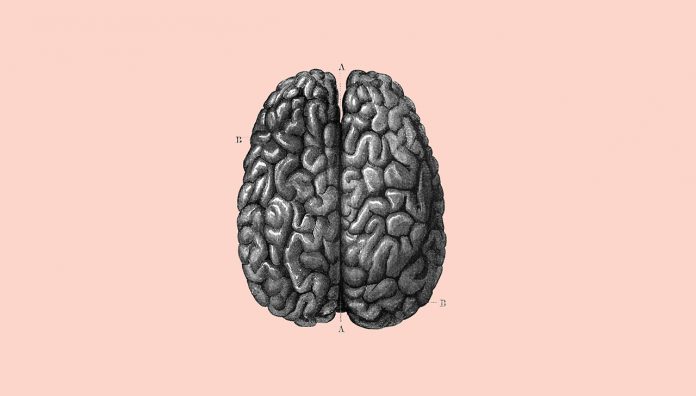While chlorpromazine’s use on people with schizophrenia has been overtaken by atypical antipsychotics, it is still used widely.
Chlorpromazine is a ‘dirty drug’.1 This is not because it precipitates when diluted in dirty-coloured tea or coffee – including decaffeinated varieties.2 Rather, the classic antipsychotic instrumental in the development of neuropsychopharmacology is called a dirty drug because it binds with an exceptionally large number of nervous system receptors.1
In a biochemical twist, this ‘dirty’ characteristic underlies chlorpromazine’s use to treat many conditions.
Merci Beaucoup
In 1933 French pharmaceutical company Rhône-Poulenc began experiments which ultimately led to the development of chlorpromazine. The original goal was a new antihistamine. But in the late 1940s, one of the antihistamines synthesised, promethazine, was discovered to have sedative properties. It was quickly adopted in France for use in sleep therapy.3
Borrowing the sedative property of promethazine, French surgeons soon began using the compound to relax patients in the operating room. One of the leaders was Henri Laborit who suggested to Rhône-Poulenc they develop a compound with better stabilising properties.4 In December 1950, the company’s chemist, Paul Charpentier, produced a series of compounds including RP4560 (chlorpromazine). Known widely as ‘Laborit’s drug’ [as he was first to recognise chlorpromazine’s potential in psychiatry], Rhône-Poulenc commercialised it in France in 1952. The trade name Largactil was derived from large (broad) and acti(activity).5
Building on the sedative property of chlorpromazine, Laborit pushed for testing with agitated psychiatric patients. A trial with a single 24-year-old patient with mania was so encouraging it attracted the attention of Sorbonne psychiatrist Jean Delay, Director of the Hôpital Sainte-Anne in Paris.3 Along with his hospital colleague, Pierre Deniker, Delay administered chlorpromazine to 38 patients with psychosis with dramatic results. The treatment went beyond simple sedation.
Patients showed improvements in thinking and emotional behaviour.3 The reputation of chlorpromazine was made.6
Soon its use spread, first to Europe and North America, and by 1964 about 50 million people worldwide had taken it.7 Chlorpromazine remained the drug of choice for schizophrenia until a second generation of antipsychotics, with a reduced degree of extrapyramidal adverse effects, were developed by the 1980s.8 Defined as one of the greatest advances in psychiatry, chlorpromazine is still on the World Health Organization’s Essential Medicines List.9
How it works
Chlorpromazine is a phenothiazine, a class of compounds that block activity of postsynaptic brain receptors, including: dopaminergic, alpha adrenergic, serotonergic, histaminic and muscarinic. It appears to reduce overactivity in the dopamine pathway. This is backed by the observation that drugs which increase dopaminergic availability, like cocaine and amphetamines, can trigger psychotic effects in people without schizophrenia.10,11,12,14
Use in Australia
Better known by its trade name Largactil and (elsewhere) Thorazine, among others, its uses range from schizophrenia, related psychotic disorders and aggressive behaviour in children under age 12, to nausea, vomiting, and prolonged hiccups. It can relieve restlessness and anxiety before surgery. It even helps manage the symptoms of tetanus.13,14
References
- Falkai P, Vogeley K. Chances of new atypical substances. Fortschr Neurol Psychiatr 2000;68(Suppl 1):S32–7. At: biopsychiatry.com/antipsychotics.htm
- Curry ML, Curry SH, Marroum PJ. Interaction of phenothiazine and related drugs and caffeinated beverages (letter). Ann Pharmacother 1991;25:437. At: ncbi.nlm.nih.gov/pubmed/1681621
- Healy D. Explorations in a new world. In: The creation of psychopharmacology. Cambridge, Massachusetts: Harvard University Press; 2002. p. 77–106. At: bibliovault.org/BV.book.epl?ISBN=9780674006195
- Turner T. Chlorpromazine: unlocking psychosis. BMJ 2007;334(Suppl 1):s7. At: https://www.ncbi.nlm.nih.gov/pubmed/17204765
- López-Muñoz F, Alamo C, Cuenca E, et al. History of the discovery and clinical introduction of chlorpromazine. Ann Clin Psychiatr 2005;17(3):113–35. At: https://www.ncbi.nlm.nih.gov/pubmed/16433053
- Delay J, Deniker P, Harl JM. Therapeutic use in psychiatry of phenothiazine of central elective action(4560 RP). Ann Méd Psychol (Paris) 1952;110 (2 1):112–117. At: ncbi.nlm.nih.gov/pubmed/12986408
- Public Broadcasting Service (US). Drug for treating schizophrenia identified 1952. At: pbs.org/wgbh/aso/databank/entries/dh52dr.html
- Abou-Setta AM, Mousavi SS, Spooner C, et al. First-generation versus second-generation antipsychotics in adults: comparative effectiveness [Internet]. Rockville, Maryland: Agency for Healthcare Research and Quality (US); 2012 Report No: 12-EHC054-EF. At: www.ncbi.nlm.nih.gov/books/NBK107237/
- World Health Organization. World Health Organization model list of essential medicines: 21st list 2019. Geneva. At: who.int/iris/handle/10665/325771
- Guzman F, ed. First-generation antipsychotics: an introduction. Pharmacology Institute; updated 27 June 2019. At:com/publication/first-generation-antipsychotics-an-introduction-2110
- National Institutes of Health. PubChem. Compound Summary: Phenothiazine. At: ncbi.nlm.nih.gov/compound/phenothiazine
- National Institutes of Health. PubChem. Compound Summary Chlorpromazine. At: https://pubchem.ncbi.nlm.nih.gov/compound/Chlorpromazine
- Chlorpromazine HCL. www.webmd.com/drugs/2/drug-1444/chlorpromazine-oral/details
- Australian Government Department of Health. The Pharmaceutical Benefits Scheme. Chlorpromazine. At: www.pbs.gov.au/medicine/item/1195X-1196Y-1197B-1199D-1201F-3455W






 ‘We’re increasingly seeing incidents where alert fatigue has been identified as a contributing factor. It’s not that there wasn’t an alert in place, but that it was lost among the other alerts the clinician saw,’ Prof Baysari says.
‘We’re increasingly seeing incidents where alert fatigue has been identified as a contributing factor. It’s not that there wasn’t an alert in place, but that it was lost among the other alerts the clinician saw,’ Prof Baysari says.








